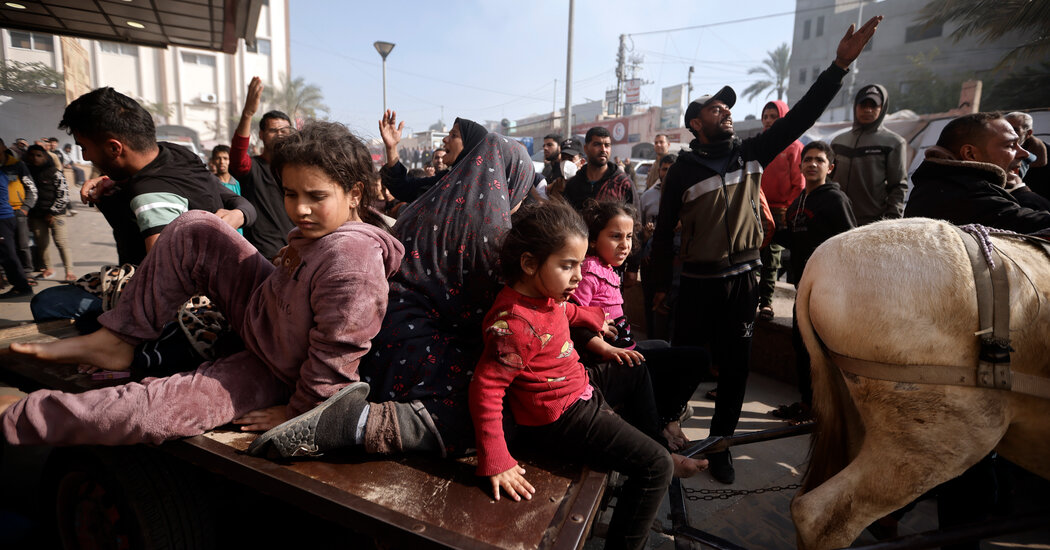The Palestine Red Crescent Society on Wednesday reported “intense shelling” near Al-Amal hospital, which it runs, and said that a strike had killed three people outside its offices in an adjacent building. Israeli forces were “surrounding” its teams and “enforcing restrictions on movement” around its offices and the hospital, the group said.
The Gazan Health Ministry said in a statement that Nasser Hospital effectively had been cut off by “continuous bombing,” preventing injured people from getting there and blocking the transfer of patients to a nearby Jordanian field hospital. The United Nations’ humanitarian affairs office said in its daily update on Tuesday that the Jordanian hospital was also included in the evacuation area.
The three hospitals, with a total of more than 600 beds, account for a fifth of the remaining functional hospital capacity in Gaza, according to the U.N. It said the evacuation area held 88,000 residents and an estimated 425,000 displaced people, packed into about 1.5 square miles.
“The Israeli occupation isolates Nasser Medical Complex and puts the lives of staff, patients and displaced people at risk,” Ashraf al-Qudra, the spokesman for the Gazan Health Ministry, said in a statement.
The aid group Doctors Without Borders said late Tuesday that its staff at Nasser could hear bombs and heavy gunfire, and that 850 patients and thousands of others sheltering there were unable to leave because the roads from the hospital were either inaccessible or too dangerous. The group said that it was “deeply concerned” for the people’s safety.
The evacuation orders came around the same time that the military said it had encircled Khan Younis after weeks of intense fighting and bombardment. The Israeli military has said it was focused on hunting down Hamas leaders in the city, which is densely packed with displaced civilians who fled the northern half of the territory at the military’s urging.
A Palestinian who fled Khan Younis on foot Wednesday morning, Yafa Abu Aker, recounted a terrifying and dangerous journey under intense bombardment.
“Our last night in Khan Younis felt like doomsday,” she said from Rafah. “Actually, we felt like maybe doomsday would have been easier,” she added.
Ms. Abu Aker said she had already fled three times since the war began, and had landed in a refugee camp in Khan Younis because “Israel said it was a safe zone.”
But then, over the last three days, she said, “we see violent clashes and over 200 military planes flying above us and intensively dropping dozens of bombs in every direction along with shelling from tanks and gunshots.”
Eventually, Ms. Abu Aker said that she realized that she had no choice but to evacuate again.“We will die if we stay and we will die if we leave,” she said, but at least by leaving, she thought she could avoid being “buried under the rubble.”
In a statement on Wednesday, Israel accused Hamas of exploiting the civilian population and said that its operation in Khan Younis would continue until it had finished “dismantling Hamas’s military framework and Hamas strongholds.”
As many as 7,000 people were believed to have been sheltering on the grounds of Nasser hospital last week, many of whom fled as fighting intensified. The Israeli military has said that mortar fire has been launched at its troops from the hospital, which is the largest in southern Gaza. Its claim could not be independently verified. Israel has long said that Hamas uses hospitals to hide militants and weapons.
The World Health Organization said last week that Nasser Hospital alone had treated 700 patients in one day and was struggling to attend to growing numbers of wounded people amid the escalating violence in Khan Younis.
